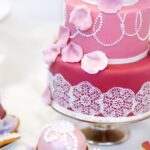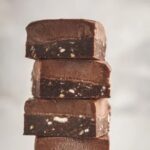What icing is used to decorate cakes? Icing plays a crucial role in cake decorating, adding not just flavor, but also texture and visual appeal to any baked creation. From the classic buttercream to the intricate royal icing, there are various types of icings used in cake decorating. In this article, we will explore the different types of icing, their pros and cons, as well as provide tips and tricks for using them effectively.
When it comes to cake decorating, the right choice of icing can make all the difference. Whether you’re looking to create a smooth and sleek finish or intricate designs on your cake, choosing the appropriate icing is essential. Each type of icing has its own unique characteristics and uses, so understanding their differences is key to successful cake decoration.
In the following sections, we will delve into the various types of icings used for decorating cakes such as buttercream, fondant, royal icing, and more. We will also discuss how to make and use buttercream icing for cake decorating, master the art of working with fondant, create intricate designs with royal icing, and provide tips for using different icing techniques.
So whether you’re a novice baker or an experienced cake decorator, this article will help you choose the right icing for your specific needs.
Types of Icing
When it comes to cake decorating, the type of icing used plays a crucial role in determining the final look and taste of the cake. There are several types of icing that are commonly used in cake decorating, each with its own unique properties and uses. From classic buttercream to delicate royal icing, understanding the different types of icing is essential for any aspiring baker or cake decorator.
Buttercream
Buttercream is arguably the most popular type of icing used in cake decorating. It is made from butter, powdered sugar, and flavorings such as vanilla or chocolate. Buttercream is known for its creamy texture and ability to hold intricate designs when piped onto cakes. It is versatile and can be easily flavored and colored to suit different preferences.
Fondant
Fondant is another common choice for cake decoration, especially for creating smooth and flawless finishes on cakes. Made from sugar, water, and gelatin, fondant has a pliable texture that can be rolled out and draped over cakes to create a sleek look. It is also ideal for sculpting intricate shapes and designs on cakes.
Royal Icing
Royal icing is a hard-drying icing made from confectioners’ sugar and egg whites or meringue powder. It is often used for creating detailed decorations such as flowers, lace patterns, and intricate piping work on cakes. Royal icing dries to a firm finish, making it perfect for intricate designs that need to hold their shape.
Each type of icing has its own pros and cons in terms of taste, texture, versatility, and ease of use. Understanding these differences can help bakers and decorators choose the right type of icing for their specific cake decorating needs. Additionally, it’s important to consider factors such as climate, humidity, and storage conditions when selecting the appropriate icing for a cake project.
Pros and Cons of Each Type of Icing
When it comes to cake decorating, the type of icing used can make a significant difference in the overall look and taste of the cake. There are several different types of icing that are commonly used for cake decoration, each with its own unique pros and cons.
Buttercream icing is one of the most popular choices for cake decorating. Its creamy texture makes it easy to work with and it can be easily colored and flavored. However, one of the downsides of buttercream is that it can melt in warm temperatures, which may not be ideal for outdoor events or warmer climates.
Fondant is another commonly used icing for cake decoration. It provides a smooth and polished finish to cakes and can be rolled out to create intricate designs. On the downside, fondant has a very sweet flavor that may not be preferred by everyone, and it can also dry out if not stored properly.
Royal icing is known for its ability to set hard, making it perfect for creating intricate designs and decorations on cakes. However, royal icing dries quickly, so working with it requires speed and precision. Additionally, royal icing has a very sweet flavor which may not appeal to all tastes.
In summary, each type of icing has its own advantages and disadvantages when it comes to cake decorating. Understanding these pros and cons can help you choose the right icing for your specific needs and preferences.
How to Make and Use Buttercream Icing for Cake Decorating
Buttercream icing is a versatile and popular choice for cake decorating due to its smooth texture and ability to hold intricate designs. This type of icing is made from butter or shortening, powdered sugar, flavorings, and sometimes a liquid such as milk or cream.
One of the key advantages of using buttercream icing is its ease of use – it can be easily colored and flavored to suit different cake designs and can be used to create a variety of textures, from smooth finishes to piped flowers and intricate patterns.
To make buttercream icing, you will need to start by creaming the butter or shortening with an electric mixer until it becomes light and fluffy. Then gradually add the powdered sugar, mixing well after each addition.
Once the sugar is fully incorporated, add in any flavorings or colors as desired, along with a small amount of liquid if needed to achieve the desired consistency. It’s important to remember that buttercream can sometimes become too soft or too stiff, so adjusting the amount of powdered sugar or liquid may be necessary.
When it comes to using buttercream icing for cake decorating, there are a few key techniques to keep in mind. One of the most common ways to use buttercream is for crumb coating – this involves applying a thin layer of icing all over the cake to seal in any crumbs before adding a final layer for decoration.
Buttercream can also be used for piping borders, writing messages, creating rosettes, and other decorative elements on cakes. Its versatility and relatively forgiving nature make it an excellent choice for both beginner and experienced decorators alike.
In addition to its ease of use, one of the major benefits of using buttercream icing is its taste. The rich, creamy texture and sweet flavor complement a wide range of cake flavors including chocolate, vanilla, red velvet, and more.
However, one potential drawback of using buttercream is that it may not hold up as well in warm temperatures compared to fondant or royal icing. This may be something to consider if you’re decorating a cake that will be displayed for an extended period in a warmer environment.
Mastering the Art of Working With Fondant for Cake Decoration
Fondant is a popular choice for cake decoration due to its smooth and polished finish. This section will explore the intricacies of working with fondant, from the basics of making it to mastering advanced decorating techniques.
Making Fondant
Fondant can be made at home using simple ingredients such as gelatin, water, corn syrup, glycerin, and powdered sugar. The process involves melting the gelatin with water and corn syrup, then adding glycerin and mixing in powdered sugar until a dough forms. Alternatively, pre-made fondant can be purchased in stores in various colors and flavors.
Applying Fondant to Cakes
When working with fondant, it is crucial to ensure that the cake underneath is properly prepared. A layer of buttercream or ganache provides a smooth surface for the fondant to adhere to. After rolling out the fondant to an even thickness, it should be carefully draped over the cake and smoothed down to prevent air bubbles.
Advanced Fondant Techniques
Once the basic application of fondant is mastered, decorators can experiment with advanced techniques such as creating intricate designs, textures, and 3D figurines. These techniques often involve the use of sculpting tools, edible coloring agents, and molds. With practice and patience, decorators can achieve stunning works of art using fondants such as ruffles, drapes, quilting patterns, and realistic floral decorations.
In mastering the art of working with fondant for cake decoration, decorators unlock a world of creative possibilities for enhancing their cakes. Whether making one’s own fondant or purchasing it commercially, applying it seamlessly onto cakes and delving into advanced techniques brings an exquisite touch to any cake design.
Creating Intricate Designs With Royal Icing
Royal icing is a popular choice for creating intricate and detailed designs on cakes. This type of icing is made from powdered sugar, egg whites or meringue powder, and water, making it easy to work with and perfect for piping fine details. Here are some tips and tricks for creating beautiful designs with royal icing:
- Use a piping bag with a small round tip to create delicate lines and borders on your cake.
- Practice piping designs on parchment paper before working directly on the cake to ensure precision and consistency.
- To add dimension to your designs, consider using different consistencies of royal icing – thicker icing holds its shape for outlining, while thinner icing can be used for flooding and filling in spaces.
Another advantage of royal icing is that it dries hard, making it ideal for creating 3D decorations such as flowers, lace patterns, and even edible figurines. However, one drawback of royal icing is that it can become very stiff and difficult to work with if not stored properly or if left exposed to air for too long.
If you want to add a touch of elegance to your cakes, mastering the art of working with royal icing is essential. With practice and patience, you can create stunning works of art that will impress your friends and family.
Remember that when choosing the right type of icing for your cake decorating needs, consider the design you want to achieve as well as the flavor profile of the cake itself. Royal icing is best suited for intricate designs but may not be the best choice for covering an entire cake due to its hard texture. Keep these factors in mind when deciding what kind of icing is best for your next baking project.
Tips and Tricks for Using Different Icing Techniques
When it comes to cake decorating, mastering different icing techniques is essential for creating beautiful and professional-looking cakes. Whether you’re working with buttercream, fondant, or royal icing, there are a few tips and tricks that can help take your cake decorating skills to the next level.
One important tip for using buttercream icing is to make sure that your cake layers are properly leveled and chilled before applying the icing. This will help ensure that the icing goes on smoothly and evenly, resulting in a more polished final product. Additionally, investing in quality piping tips can make a world of difference when it comes to creating intricate designs with buttercream.
For those working with fondant, one helpful trick is to use cornstarch or powdered sugar to prevent the fondant from sticking to your work surface. This will make it much easier to roll out the fondant and transfer it onto the cake without tearing or stretching. It’s also important to smooth out any air bubbles that may form when applying fondant to the cake in order to achieve a flawless finish.
When using royal icing for cake decorating, it’s important to pay attention to consistency. Royal icing can be adjusted by adding small amounts of water or confectioners’ sugar until you achieve the desired thickness for piping or flooding. Another useful tip for working with royal icing is to use gel food coloring instead of liquid food coloring, as this will help maintain the proper consistency of the icing.
| Technique | Description |
|---|---|
| Piping | This involves using a pastry bag and various piping tips to create intricate designs on cakes. |
| Frosting | A simple way of covering the top surface of a cake adequately at first before smoothening it out all over. |
By keeping these tips and tricks in mind, you can enhance your skills in using different icing techniques and create stunning cakes for any occasion.
The Best Icing for Different Types of Cakes
When it comes to choosing the best icing for different types of cakes, it’s important to consider the flavor profile and texture of the cake itself. Different types of cakes pair better with certain types of icing, and understanding these combinations can take your cake decorating skills to the next level.
For chocolate cakes, a classic choice is chocolate buttercream icing. This rich and creamy icing complements the deep flavor of chocolate cake perfectly. Additionally, ganache is also a popular choice for chocolate cakes due to its smooth and glossy finish.
On the other hand, vanilla cakes pair well with various types of icing, including classic buttercream, cream cheese frosting, or even a light glaze. The versatility of vanilla cake allows for a wide range of icing options depending on personal preference.
Red velvet cakes traditionally use cream cheese frosting as their go-to icing. The tangy flavor of cream cheese balances out the sweetness of the cake while adding a luscious creamy texture.
Understanding which type of icing works best with different types of cakes allows you to create harmonious flavor combinations that will impress your friends and family at any gathering.
| Cake Type | Best Icing |
|---|---|
| Chocolate | Chocolate Buttercream or Ganache |
| Vanilla | Buttercream, Cream Cheese Frosting or Glaze |
| Red Velvet | Cream Cheese Frosting |
Conclusion
In conclusion, choosing the right icing for your cake decorating needs is a crucial decision that can significantly impact the overall appearance and taste of your creation. With various options such as buttercream, fondant, and royal icing, it’s important to consider the pros and cons of each type of icing before making a selection. While buttercream offers versatility and delicious taste, fondant provides smooth and polished finishes, and royal icing allows for intricate designs.
It’s essential to understand the specific requirements of the cake you are decorating when selecting the icing. For instance, chocolate cakes may pair well with rich buttercream frosting, while fondant can complement vanilla or red velvet cakes perfectly. By considering both the aesthetics and flavor profile of the cake, you can ensure that your choice of icing enhances the overall presentation and taste.
Experimenting with different icing techniques can also open up new possibilities for creative cake decoration. Whether it’s using piping bags for detailed designs or mastering the art of working with fondant, there are endless opportunities to elevate your cake decorating skills. Ultimately, by understanding how each type of icing works and how to best utilize them, you can take your cake decorating to new heights and impress everyone with your beautifully decorated creations.
Frequently Asked Questions
What Kind of Frosting Is Best for Decorating Cakes?
The best frosting for decorating cakes is buttercream frosting. It is versatile, easy to work with, and holds its shape well when piped onto a cake. Plus, it comes in various flavors and colors to suit any design.
What Icing Do Cake Shops Usually Use?
Cake shops typically use buttercream icing for their cakes. This type of icing is popular because it is easy to work with, has a smooth texture, and can be flavored and colored as needed. It also holds up well in different temperatures.
What Do Bakers Use to Decorate Cakes?
Bakers use various tools and ingredients to decorate cakes, including piping bags and tips for creating intricate designs with buttercream or royal icing. Fondant is also commonly used to cover cakes and create detailed decorations like flowers, figurines, and other sculpted elements on the cake’s surface.
Additionally, edible sprinkles, candies, and edible food colors are often used to add finishing touches to cake decorations.

Welcome to my blog about home and family. This blog is a place where I will share my thoughts, ideas, and experiences related to these important topics. I am a stay-at-home mom with two young children. I hope you enjoy reading it! and may find some helpful tips and ideas that will make your home and family life even better!





